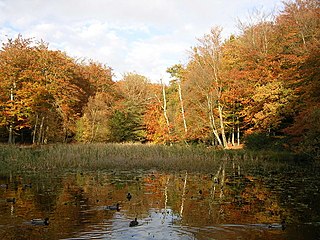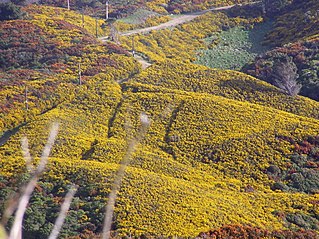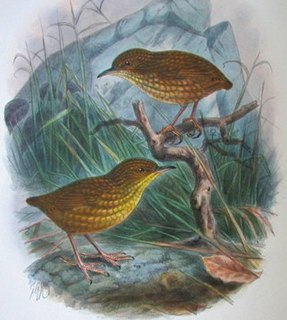Related Research Articles

A World Heritage Site is a landmark or area with legal protection by an international convention administered by the United Nations Educational, Scientific and Cultural Organization (UNESCO). World Heritage Sites are designated by UNESCO for having cultural, historical, scientific or other form of significance. The sites are judged to contain "cultural and natural heritage around the world considered to be of outstanding value to humanity".

Protected areas or conservation areas are locations which receive protection because of their recognized natural, ecological or cultural values. There are several kinds of protected areas, which vary by level of protection depending on the enabling laws of each country or the regulations of the international organizations involved. Generally speaking though, protected areas are understood to be those in which human presence or at least the exploitation of natural resources is limited.

The International Union for Conservation of Nature is an international organization working in the field of nature conservation and sustainable use of natural resources. It is involved in data gathering and analysis, research, field projects, advocacy and education. IUCN's mission is to "influence, encourage and assist societies throughout the world to conserve nature and to ensure that any use of natural resources is equitable and ecologically sustainable".

NatureScot, which was formerly known as Scottish Natural Heritage, is the public body responsible for Scotland's natural heritage, especially its natural, genetic and scenic diversity. It advises the Scottish Government and acts as a government agent in the delivery of conservation designations, i.e. national nature reserves, local nature reserves, national parks, Sites of Special Scientific Interest (SSSIs), Special Areas of Conservation, Special Protection Areas and the national scenic areas. The protected areas in Scotland account for 20% of the total area, SSSIs alone 13%. NatureScot receives annual funding from the Government in the form of Grant in Aid to deliver Government priorities for the natural heritage.

The Department of Conservation is the public service department of New Zealand charged with the conservation of New Zealand's natural and historical heritage.

Burnham Beeches is a 374.6 hectare biological Site of Special Scientific Interest situated west of Farnham Common in the village of Burnham, Buckinghamshire. The southern half is owned by the Corporation of London and is open to the public. It is also a National Nature Reserve and a Special Area of Conservation.

The kākā is a large species of parrot of the family Nestoridae found in native forests of New Zealand. Two subspecies are recognised. It is endangered and has disappeared from much of its former range, though conservation efforts mean it is now increasingly common across Wellington.

The conservation status of a group of organisms indicates whether the group still exists and how likely the group is to become extinct in the near future. Many factors are taken into account when assessing conservation status: not simply the number of individuals remaining, but the overall increase or decrease in the population over time, breeding success rates, and known threats. Various systems of conservation status exist and are in use at international, multi-country, national and local levels as well as for consumer use.

Conservation in New Zealand has a history associated with both Māori and Europeans. Both groups of people caused a loss of species and both altered their behaviour to a degree after realising their effect on indigenous flora and fauna.
Natural heritage refers to the sum total of the elements of biodiversity, including flora and fauna, ecosystems and geological structures. It forms part of our natural resources.
New Zealand has several notable wetlands but 90% of wetland areas have been lost following European settlement.

Protected areas of Poland include the following categories, as defined by the Act on Protection of Nature of 16 April 2004, by the Polish Parliament:

Ancient and Primeval Beech Forests of the Carpathians and Other Regions of Europe is a transnational serial nature UNESCO World Heritage Site, encompassing 94 component parts in 18 European countries.

Gorse was introduced to New Zealand in the early stages of European settlement. It is now a major invasive plant species with millions of dollars spent on its control.

Deinacrida carinata, also known as the Herekopare wētā or Foveaux wētā is one of the smallest of the 11 species of giant wētā that belong to the genus Deinacrida, and is a member of the Anostostomatidae family. It is endemic to New Zealand and is currently restricted to a few offshore predator free islands: Herekopare Island, Kundy Island, Tihaka/Pig Island and Whenua Hou/Codfish Island. D.carinata is a protected species and is nationally endangered.
Deinacrida tibiospina, also known as the Mt Arthurgiant wētā or the Nelson alpine giant wētā, is a species of wētā in the family Anostostomatidae. It is endemic to the South Island of New Zealand. The wētā is only found in some alpine zones of Kahurangi National Park. Compared with natural densities of other wētā, D. tibiospina is fairly rare. Little conservation effort has been made for this species because, despite its elusiveness, populations on the mainland have been maintained without human intervention.
In New Zealand an ecological district is defined as a particular geographical region that has a characteristic landscape and range of biological communities. They were developed after a need was seen for Protected Natural Areas.

Cats are a popular pet in New Zealand. Cat ownership is occasionally raised as a controversial conservation issue due to the predation of endangered species, such as birds and lizards, by feral cats.

Aorangi Forest Park is a 194-square-kilometre (75 sq mi) protected area in the Wellington Region of New Zealand administered by the Department of Conservation (DOC). It had been called the Haurangi Forest Park but DOC changed to reflect the Māori name of the range protected by the park.

Many parts of Scotland are protected in accordance with a number of national and international designations because of their environmental, historical or cultural value. Protected areas can be divided according to the type of resource which each seeks to protect. NatureScot has various roles in the delivery of many environmental designations in Scotland, i.e. those aimed at protecting flora and fauna, scenic qualities and geological features. Historic Environment Scotland is responsible for designations that protect sites of historic and cultural importance. Some international designations, such as World Heritage Sites, can cover both categories of site.